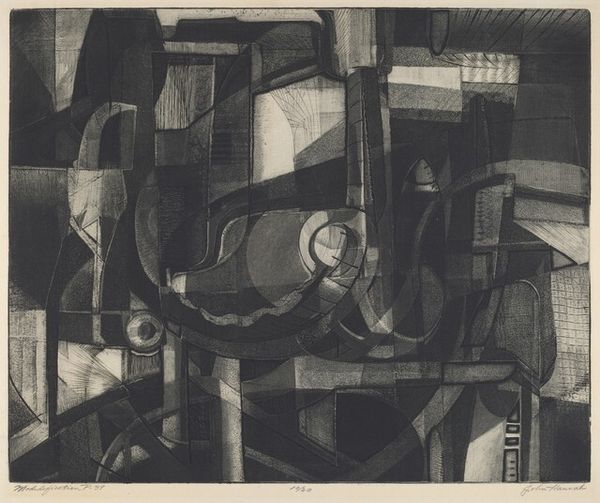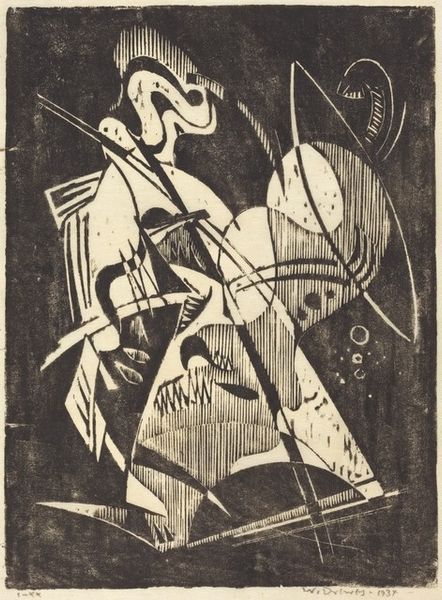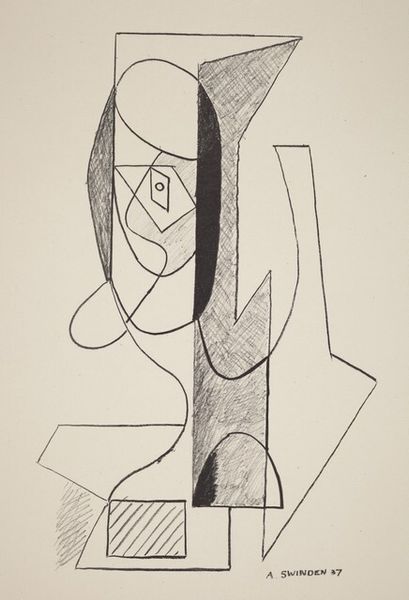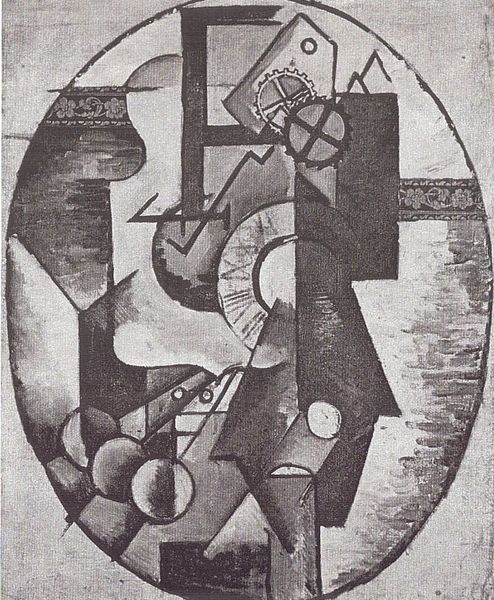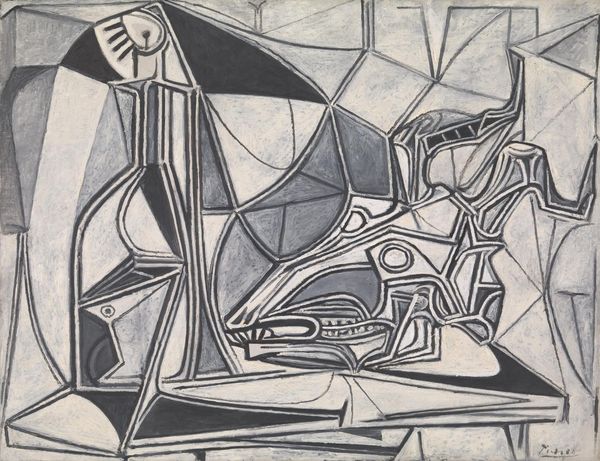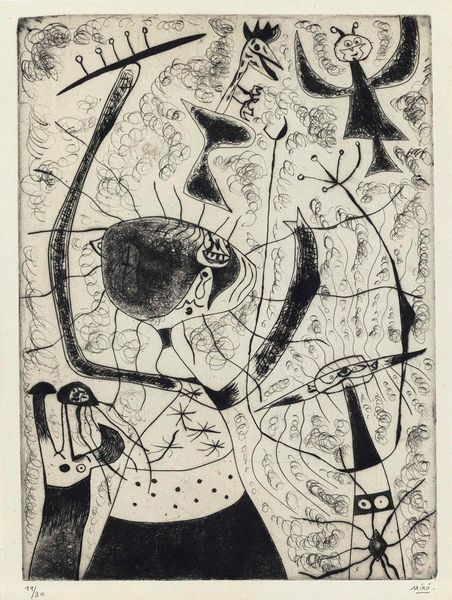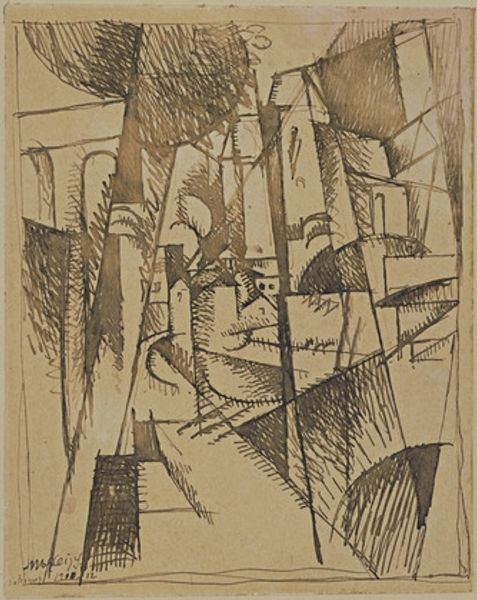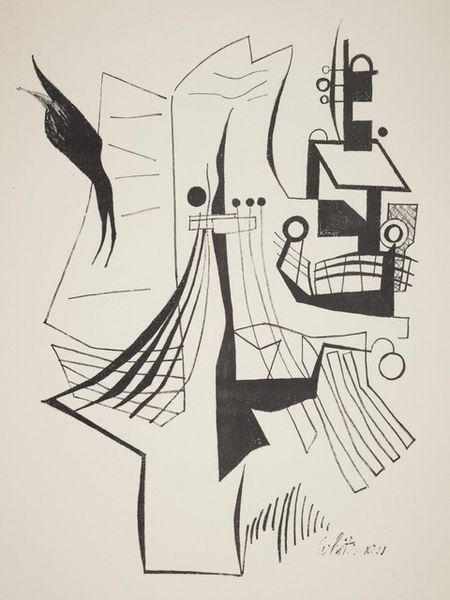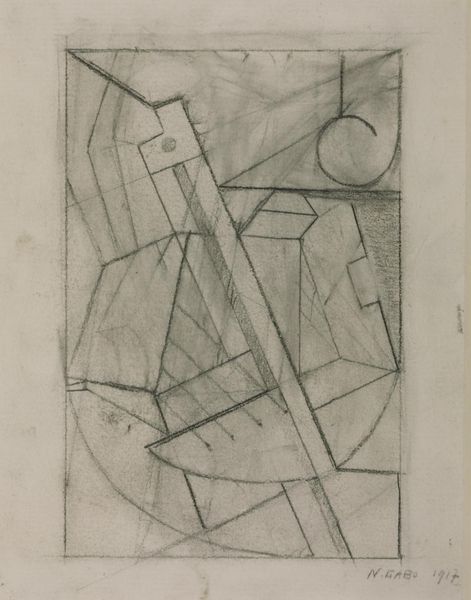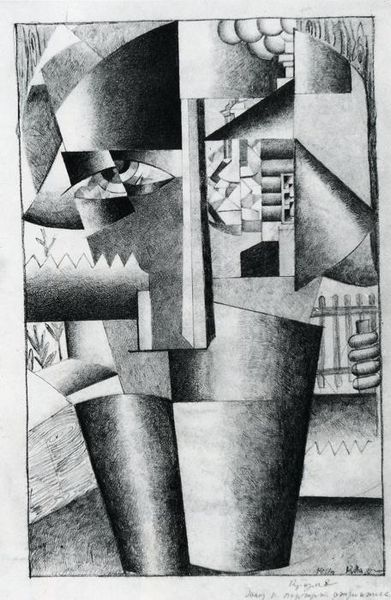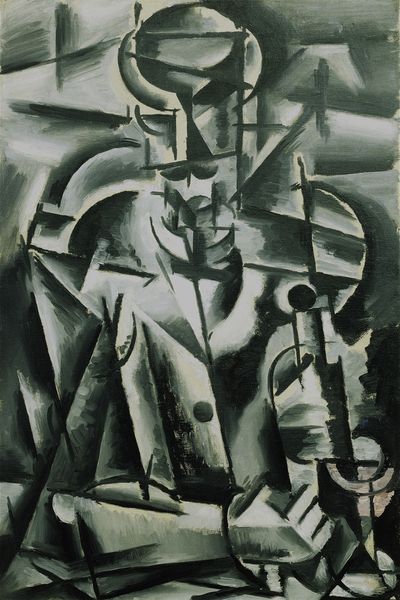
drawing, graphite
#
drawing
#
cubism
#
art-nouveau
#
geometric
#
abstraction
#
graphite
#
futurism
Copyright: Public domain
Curator: Here we have Kazimir Malevich's 1912 work, "Cubo-Futurist Composition," executed in graphite. Editor: It feels… fractured. Restless, even. The gray scale only heightens that sense of disjointedness. It's not soothing, but undeniably dynamic. Curator: Precisely. Note the convergence of Cubist fragmentation and Futurist dynamism. Malevich dismantles form into geometric components, reflecting the era's fascination with machines and motion. Editor: Yet, it doesn’t quite escape the feeling of its time, does it? This frenetic energy seems very much a reaction to the pre-war anxieties of the early 20th century. Look at how the shapes almost clash, a visual representation of societal upheaval. Curator: Consider also the deliberate use of line. He employs varied line weights and hatching techniques that amplify the spatial ambiguity inherent in Cubo-Futurism. Editor: Do you see, in the upper left corner, almost architectural shapes? Are those meant to represent the growing urban landscapes and their effects on the psyche? This rapid urbanization, with its promise and its alienation… Curator: Perhaps. Or perhaps, the architecture is there as merely a structural element. This piece offers an exploration of perspective, of creating a sense of volume on a two-dimensional plane through overlapping geometric forms. It plays with our perception. Editor: To divorce it entirely from the social climate seems reductive. Doesn’t its starkness and abstraction speak to the dehumanizing effect of industrialization? These shapes could represent individuals lost within the larger mechanical framework. Curator: An interesting perspective. But let us appreciate it simply as an exercise in pure form, color as structure, and motion made manifest. It’s as much about artistic innovation. Editor: Well, in art as in life, form rarely exists in a vacuum. A great discussion to have, standing before such a pivotal piece that captured its historical moment through radical approaches to geometric deconstruction.
Comments
No comments
Be the first to comment and join the conversation on the ultimate creative platform.
